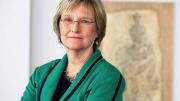One of the best descriptions of the promise of endowments is just two words long: vigorous immortality. This succinct phrase, from John Campbell, Morton L. and Carole S. Olshan Professor of Economics in Harvard’s Faculty of Arts and Sciences, communicates especially well the significant—and frequently misunderstood—tension at the heart of an important source of funding and stability for hundreds of colleges and universities. Individuals make contributions to endowments with the understanding that their philanthropy will have an effect on both the present and the future, supporting activities and driving progress forever.
What does this mean for Harvard? The endowment is our largest financial asset and our largest source of revenue. It is invested to generate income that each year funds approximately 35 percent of the university’s operating budget. At the same time, the corpus of the endowment must be preserved to continue to generate income permanently, taking into account the reality that a scholarship or a professorship is, given inflation, inevitably going to cost more over time. We currently aim to spend approximately 5 percent of the endowment’s total value each year, estimating a 3 percent inflation rate and an 8 percent average investment return. If we spent less, we judge we would not be using our resources vigorously enough in the present; if we spent more, we would be eroding the principal and undermining its immortality. A recent study undertaken by Amherst College explored what it would mean for that institution to spend its endowment—which funds half of its operating budget—at an 8 percent annual rate, a number increasingly suggested by some critics of higher education’s endowment policies. The Amherst endowment would be 60 percent smaller after twenty-five years, and the college would have to turn to other means, like tuition, to fund its basic operations. Similar policies would have a parallel impact at Harvard.
The majority of our donors give to the endowment with specific objectives in mind, and we are required by law to honor these purposes: resources donated for a professorship of government cannot be used to fund a professorship of medicine or a library collection. About 70 percent of Harvard’s endowment is restricted, its designated purposes reflecting a range of endeavors that extends far beyond the College and the graduate and professional schools in which we offer instruction and degrees. Harvard’s endowment also funds an institute for advanced study, a major theater that regularly sends productions to Broadway, and museums of art, culture, and science that house some of the finest collections held by any University. It funds a 265-acre arboretum that serves as a public park for the City of Boston and attracts more than a quarter million visitors each year, a research library and collection in Washington, DC, devoted to Byzantine and pre-Columbian studies that welcomes the public to its gardens and museum, and an Italian Renaissance research center in Florence, Italy, that hosts scholars from around the world. These are just a few illustrations of the scale and scope of the endowment’s responsibilities.
With more than twelve thousand funds, Harvard’s endowment tells the stories of people’s relationships with the University through time, a kind of collected works of philanthropy. What mattered most to those people? What did they consider essential and want to see preserved? Where did they believe their generosity could do the most good? Nearly 375 years have passed since Ann Radcliffe donated one hundred pounds to aid “some poore Scholar” at Harvard College. It was the first scholarship, an unprecedented gift that laid the groundwork for centuries of giving to support students. The endowment has enabled Harvard to award $1.4 billion in financial aid to undergraduates over the past decade, and net tuition paid by families has declined in recent years as a result.
At Harvard, the endowment connects us to predecessors who believed in the ideals and purposes of the University, who sought to extend its good work for all time. The endowment’s thoughtful stewardship and preservation will enable our successors to meet and shape the age that is waiting before. This is our sacred trust—an aim pursued, as ever before, with the promise of vigorous immortality.








